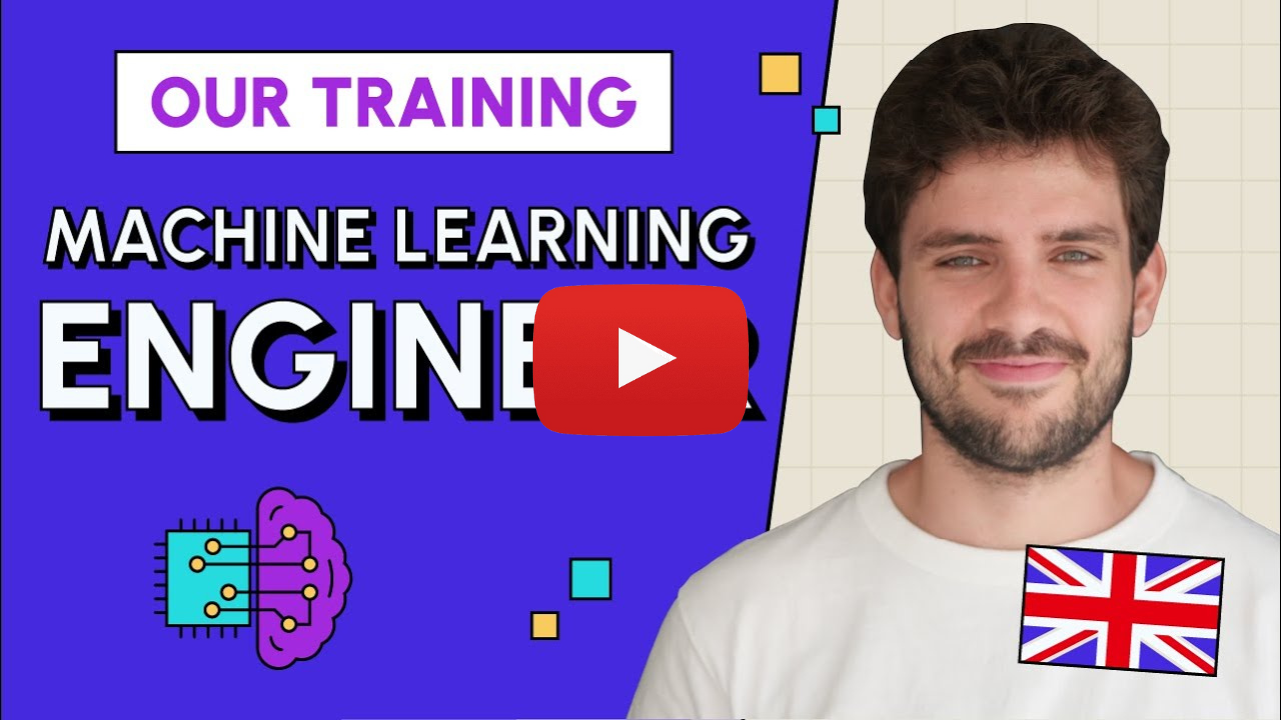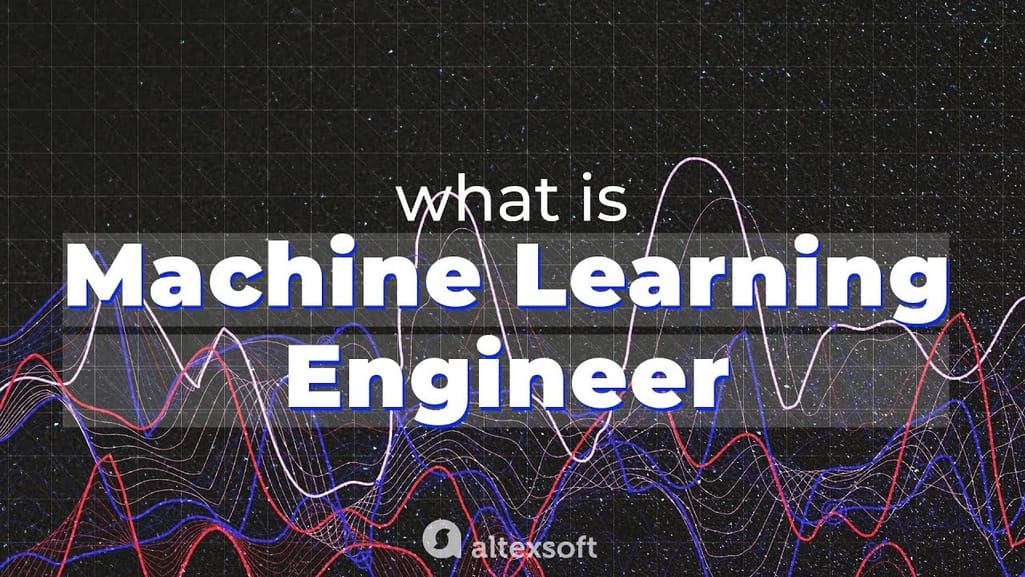All Categories
Featured
Table of Contents
- – Some Ideas on Aws Machine Learning Engineer Na...
- – Excitement About How To Become A Machine Learn...
- – Machine Learning Engineer Full Course - Resta...
- – The Facts About Aws Machine Learning Engineer...
- – Indicators on Best Machine Learning Courses ...
- – The 20-Second Trick For Machine Learning Eng...
- – Fascination About 6 Steps To Become A Machin...
Some people believe that that's dishonesty. Well, that's my entire profession. If someone else did it, I'm going to utilize what that individual did. The lesson is placing that aside. I'm compeling myself to analyze the feasible remedies. It's more concerning eating the content and attempting to apply those concepts and less concerning finding a collection that does the job or searching for someone else that coded it.
Dig a bit deeper in the math at the beginning, simply so I can develop that structure. Santiago: Ultimately, lesson number 7. This is a quote. It claims "You have to comprehend every information of an algorithm if you intend to utilize it." And afterwards I state, "I assume this is bullshit suggestions." I do not think that you have to recognize the nuts and screws of every algorithm prior to you use it.
I have actually been making use of neural networks for the lengthiest time. I do have a feeling of just how the slope descent functions. I can not discuss it to you today. I would need to go and inspect back to actually obtain a much better intuition. That doesn't suggest that I can not solve points utilizing neural networks? (29:05) Santiago: Attempting to force people to believe "Well, you're not going to succeed unless you can discuss each and every single information of exactly how this functions." It returns to our arranging instance I assume that's just bullshit suggestions.
As an engineer, I've worked with many, numerous systems and I've utilized numerous, many things that I do not comprehend the nuts and screws of just how it functions, although I understand the effect that they have. That's the final lesson on that thread. Alexey: The funny point is when I think of all these collections like Scikit-Learn the formulas they use inside to apply, for instance, logistic regression or something else, are not the very same as the formulas we research in machine knowing classes.
Some Ideas on Aws Machine Learning Engineer Nanodegree You Need To Know
Also if we tried to find out to get all these basics of equipment discovering, at the end, the algorithms that these libraries make use of are different. ? (30:22) Santiago: Yeah, absolutely. I believe we require a great deal much more pragmatism in the industry. Make a great deal even more of an influence. Or concentrating on supplying worth and a little bit less of purism.

I typically talk to those that want to function in the sector that want to have their influence there. I do not dare to talk regarding that since I do not know.
However right there outside, in the sector, materialism goes a long method without a doubt. (32:13) Alexey: We had a remark that said "Feels even more like inspirational speech than chatting about transitioning." Perhaps we ought to switch. (32:40) Santiago: There you go, yeah. (32:48) Alexey: It is an excellent inspirational speech.
Excitement About How To Become A Machine Learning Engineer In 2025
Among the points I intended to ask you. I am taking a note to speak about progressing at coding. Initially, let's cover a pair of points. (32:50) Alexey: Let's begin with core tools and frameworks that you require to find out to actually shift. Let's state I am a software designer.
I recognize Java. I recognize just how to make use of Git. Maybe I recognize Docker.
Santiago: Yeah, definitely. I believe, number one, you should start learning a little bit of Python. Given that you currently recognize Java, I do not believe it's going to be a massive transition for you.
Not because Python is the very same as Java, however in a week, you're gon na get a lot of the distinctions there. Santiago: After that you get certain core tools that are going to be used throughout your entire profession.
Machine Learning Engineer Full Course - Restackio - The Facts
You get SciKit Learn for the collection of device learning algorithms. Those are devices that you're going to have to be making use of. I do not advise simply going and learning concerning them out of the blue.
Take one of those courses that are going to start presenting you to some problems and to some core ideas of machine knowing. I do not keep in mind the name, but if you go to Kaggle, they have tutorials there for totally free.
What's good concerning it is that the only demand for you is to know Python. They're mosting likely to provide a problem and tell you exactly how to use decision trees to address that certain problem. I believe that procedure is incredibly powerful, due to the fact that you go from no equipment learning background, to recognizing what the trouble is and why you can not resolve it with what you know today, which is straight software design methods.
The Facts About Aws Machine Learning Engineer Nanodegree Revealed
On the other hand, ML engineers concentrate on structure and releasing artificial intelligence models. They concentrate on training designs with data to make predictions or automate tasks. While there is overlap, AI designers manage more diverse AI applications, while ML engineers have a narrower concentrate on artificial intelligence formulas and their functional application.

Artificial intelligence engineers concentrate on developing and deploying artificial intelligence designs right into manufacturing systems. They work with engineering, guaranteeing versions are scalable, efficient, and incorporated right into applications. On the other hand, data researchers have a broader function that includes information collection, cleaning, exploration, and building versions. They are usually accountable for removing understandings and making data-driven decisions.
As organizations increasingly adopt AI and device knowing innovations, the need for experienced specialists expands. Machine knowing designers function on cutting-edge tasks, contribute to advancement, and have competitive salaries.
ML is essentially various from conventional software application growth as it focuses on teaching computer systems to pick up from information, as opposed to shows specific policies that are implemented methodically. Uncertainty of results: You are most likely used to creating code with predictable outputs, whether your function runs when or a thousand times. In ML, nevertheless, the outcomes are less particular.

Pre-training and fine-tuning: How these versions are trained on huge datasets and then fine-tuned for specific tasks. Applications of LLMs: Such as text generation, sentiment analysis and details search and retrieval.
Indicators on Best Machine Learning Courses & Certificates [2025] You Should Know
The capability to handle codebases, combine modifications, and fix conflicts is equally as vital in ML growth as it remains in conventional software application tasks. The abilities created in debugging and testing software program applications are highly transferable. While the context may alter from debugging application logic to identifying problems in information handling or model training the underlying concepts of systematic examination, theory testing, and iterative improvement coincide.
Machine discovering, at its core, is heavily reliant on statistics and likelihood theory. These are essential for comprehending exactly how algorithms discover from data, make predictions, and assess their performance. You need to take into consideration becoming comfy with principles like analytical importance, circulations, hypothesis screening, and Bayesian reasoning in order to layout and translate designs effectively.
For those curious about LLMs, a thorough understanding of deep knowing architectures is advantageous. This includes not only the auto mechanics of semantic networks but likewise the architecture of details versions for different usage situations, like CNNs (Convolutional Neural Networks) for picture handling and RNNs (Persistent Neural Networks) and transformers for sequential data and natural language processing.
You should recognize these problems and learn techniques for determining, mitigating, and connecting concerning bias in ML versions. This consists of the potential effect of automated decisions and the moral effects. Several designs, particularly LLMs, require substantial computational resources that are commonly offered by cloud platforms like AWS, Google Cloud, and Azure.
Structure these abilities will certainly not just promote a successful shift into ML but also ensure that developers can add properly and properly to the development of this dynamic area. Concept is necessary, however absolutely nothing defeats hands-on experience. Beginning working with projects that enable you to apply what you've discovered in a sensible context.
Join competitors: Join platforms like Kaggle to take part in NLP competitions. Build your jobs: Start with simple applications, such as a chatbot or a text summarization device, and gradually increase intricacy. The field of ML and LLMs is swiftly advancing, with new advancements and innovations arising on a regular basis. Staying upgraded with the most recent research and fads is essential.
The 20-Second Trick For Machine Learning Engineer: A Highly Demanded Career ...
Join communities and forums, such as Reddit's r/MachineLearning or community Slack channels, to discuss ideas and obtain guidance. Attend workshops, meetups, and seminars to get in touch with other professionals in the field. Contribute to open-source jobs or compose article about your discovering journey and projects. As you gain knowledge, begin seeking chances to incorporate ML and LLMs right into your job, or look for brand-new duties concentrated on these technologies.
Vectors, matrices, and their function in ML formulas. Terms like model, dataset, functions, labels, training, inference, and recognition. Data collection, preprocessing strategies, design training, assessment processes, and implementation considerations.
Decision Trees and Random Forests: Intuitive and interpretable versions. Matching trouble kinds with ideal designs. Feedforward Networks, Convolutional Neural Networks (CNNs), Recurrent Neural Networks (RNNs).
Information circulation, makeover, and function engineering approaches. Scalability concepts and performance optimization. API-driven techniques and microservices combination. Latency monitoring, scalability, and version control. Continuous Integration/Continuous Implementation (CI/CD) for ML process. Design surveillance, versioning, and efficiency monitoring. Finding and attending to adjustments in model performance with time. Attending to performance bottlenecks and resource management.
Fascination About 6 Steps To Become A Machine Learning Engineer

You'll be presented to 3 of the most pertinent components of the AI/ML self-control; overseen discovering, neural networks, and deep understanding. You'll comprehend the differences between conventional programming and maker knowing by hands-on development in supervised knowing prior to constructing out complex distributed applications with neural networks.
This training course acts as a guide to device lear ... Show A lot more.
Table of Contents
- – Some Ideas on Aws Machine Learning Engineer Na...
- – Excitement About How To Become A Machine Learn...
- – Machine Learning Engineer Full Course - Resta...
- – The Facts About Aws Machine Learning Engineer...
- – Indicators on Best Machine Learning Courses ...
- – The 20-Second Trick For Machine Learning Eng...
- – Fascination About 6 Steps To Become A Machin...
Latest Posts
How To Break Down A Coding Problem In A Software Engineering Interview
The Best Faang Interview Preparation Courses In 2025
How To Use Youtube For Free Software Engineering Interview Prep
More
Latest Posts
How To Break Down A Coding Problem In A Software Engineering Interview
The Best Faang Interview Preparation Courses In 2025
How To Use Youtube For Free Software Engineering Interview Prep